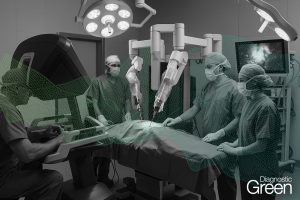We aimed to evaluate the association between the intraoperative indocyanine green (ICG) fluorescence imaging (FI) pattern, preoperative magnetic resonance imaging (MRI) findings using gadolinium ethoxybenzyl diethylenetriaminepentaacetic acid (Gd-EOB-DTPA), preoperative diffusion-weighted imaging (DWI) of MRI and histological differentiation of HCC. We retrospectively reviewed the data for 80 tumors of 64 patients. ICG FI patterns were classified into cancerous or rim-positive type. We evaluated the signal intensity ratio of the tumor and the surrounding liver tissue in the portal phase (SIRPP) and intensity in the hepatobiliary phase (HBP) of Gd-EOB-DTPA-enhanced MRI, the apparent diffusion coefficient (ADC) in the DWI of MRI and clinicopathological factors.
Results: In rim-positive group, the rate of poorly differentiated HCC and hypointensity type in HBP were significantly higher, and SIRPP and ADC were significantly lower than rim-negative group. In cancerous group, the rate of well or moderately differentiated HCC and hyperintensity type in HBP, SIRPP and ADC were significantly higher than non-cancerous group. Multivariate analysis identified low SIRPP, low ADC, and hypointensity type in HBP as the significant predictive factors for rim-positive HCC and high SIRPP, high ADC and hyperintensity type in HBP as the significant predictive factors for cancerous HCC. The positive rate of PD-L1 and VETC status of the rim-positive HCC and the HCC with low SIRPP were significantly higher than the control group.
Conclusions: The intraoperative ICG FI pattern of HCC closely correlated with histological differentiation, preoperative SIRPP and intensity type in the Gd-EOB-DTPA MRI and preoperative ADC in the DWI of MRI.




